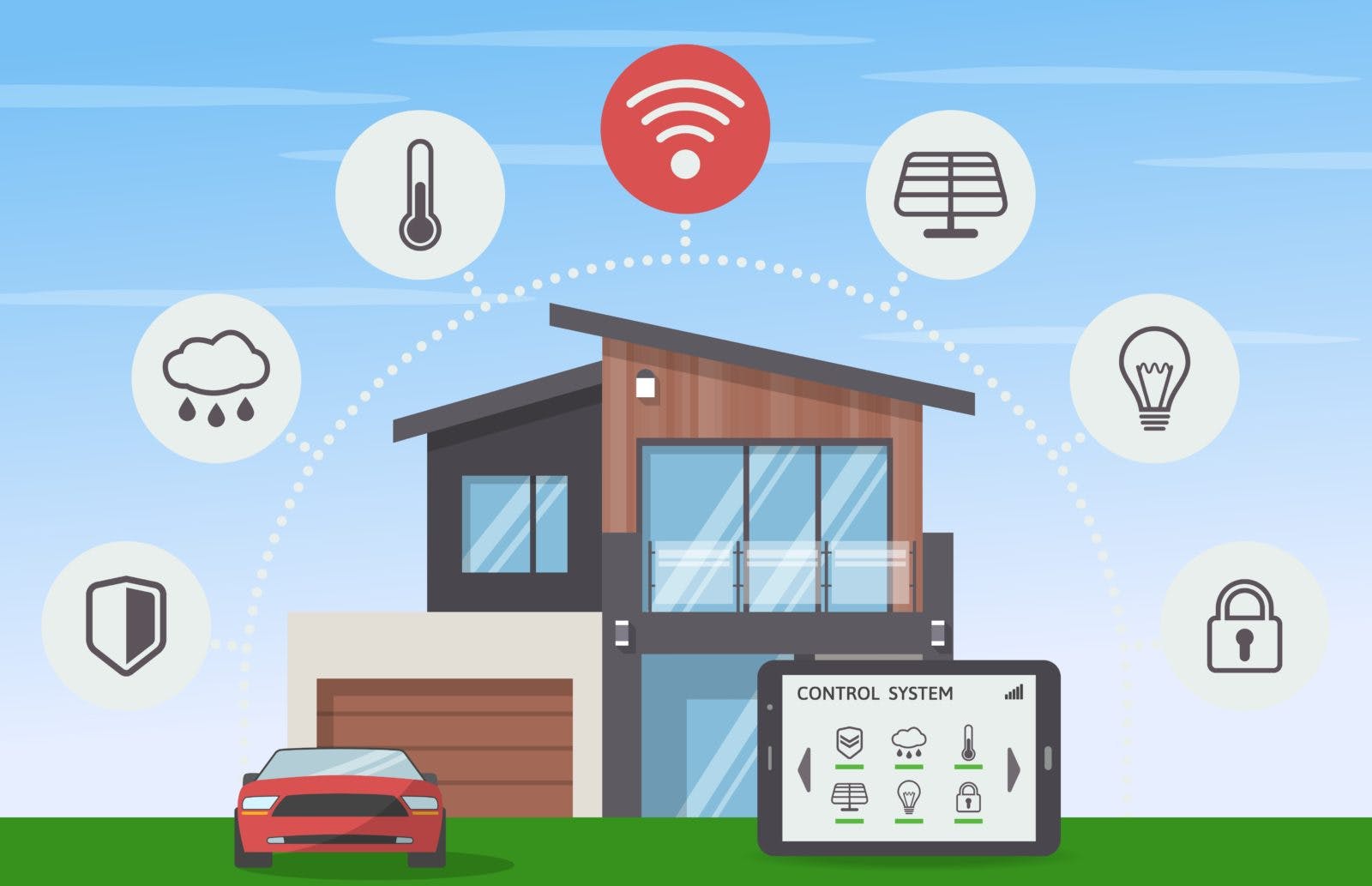If you want to take control of your time, it’s important to work smarter, not harder. Working smarter reduces your stress levels and conserves your energy. One of the best ways to meet this goal is to use innovation in your daily life – and it starts in your home.
We are inundated with technology from the day we wake with a wristwatch or phone alarm to the final minutes of the day with sleepy sounds fed through a speaker. The only thing missing is a clap of the hands to turn off the bedroom light. Oh, you have one of those too? Even better!
Approximately 350M households around the world – including about 139M in the U.S. – have smart technology in the home, according to Statistica research. That total is expected to reach roughly 670M global households by 2027. The smart-home market is valued at a little more than $100B and is forecast to reach about $380B worldwide in five years.
The home is your living hub and now your tech center. Every year we get one step close to whole-home integration of smart technology thanks in large part to the powerful device in your hand – the smartphone with its versatility and ease of use. Being connected to this incredible tool and others makes you wiser and allows you to work more efficiently.
Voice and visual cues also allow for a more seamless daily experience. Amazon’s virtual assistant follows your voice commands. Google’s Nest Cam lets you know your aging mom in another state is awake and safely starting her day. And Phillips’ Hue smart lightbulbs are setting the tone (literally and figuratively) in each room at different times of the day. Ahhh, now that’s living!
To be sure, technology in the home can be overwhelming – too much, too soon, too costly … and sometimes all of the above. Some devices and their tech tricks – while fun and quirky – may have limited usefulness and become obsolete within a couple of years.
That’s why it’s important not to simply buy for the sake of having the next shiny object on the tech store shelf. Homeowners should realize that choosing an adequate infrastructure – control system platform, network and protocols – is critical to ensure all devices work well with each other and perform to their maximum capabilities.
Egg Minder was an app that tracked the number of eggs in the refrigerator before reminding a user to add them to the shopping list. Great idea, right? It never gained traction and the company, Quirky, filed for bankruptcy. The novelty wore off almost before the eggs could spoil.
Homeowners need to research the product or service and separate the help from the hype. Front-door video cams and voice activation are powerful products well worth the investment, for example. There is visibility, security and the opportunity to act quickly when something outside the door seems awry.
Speaking of security, smart-home tech faces the risk of security threats from connected devices, particularly traditional stand-alone items such as lights, appliances and locks. Even baby monitors are vulnerable. This could slow the uptick in use until more security and safety protocols are instituted.
My maxim on smart-home technology through the years has been simple: More is better. It can improve your life, at least in small measures and the resale value of a smart-connected home is greater than one that is not.
Whether it’s for convenience, energy savings or home security, having interconnectivity between devices and those most important to you is priceless. Prioritize those items that matter most to you and speak with technologists – better known in the business as custom integrators – who can not only advise on which direction to take when the choice is overwhelming but also manage the installation and training to get you off to a good start.
What I enjoy most about these tech specialists is that, while they may geek out with similar people, most know how to speak in layman’s terms to consumers and make them feel comfortable with new technology. These experts can also help consolidate several controls into one app or home device for simplicity.
Since nearly all devices need fast internet to work well, always start with your connection to good broadband. Without it, there is arguably no need to add devices to the home. Fortunately, local municipalities in King County generally offer at least one reliable internet service provider and many areas provide two or more options to compare prices and speed levels.
Having a safer, better-running home is a wonderful feeling for everyone. Why not at least invest in a better understanding of what’s out there and then consider taking a step forward into the smart-home world?
==========
I developed a guide called Smart-home Technology: Planning and Budgeting for the Newest Advances in Safe Living. It’s yours to download free at the website Smart-Homes.Technology.




